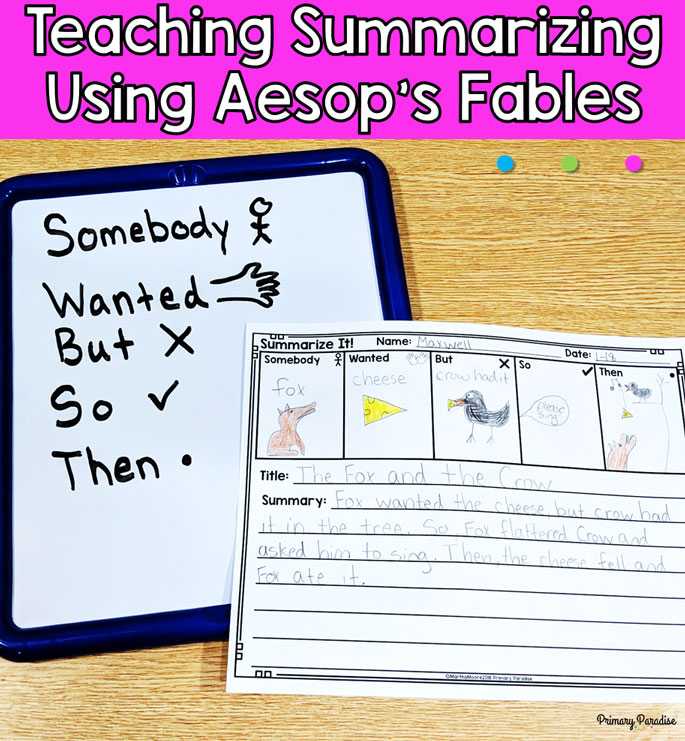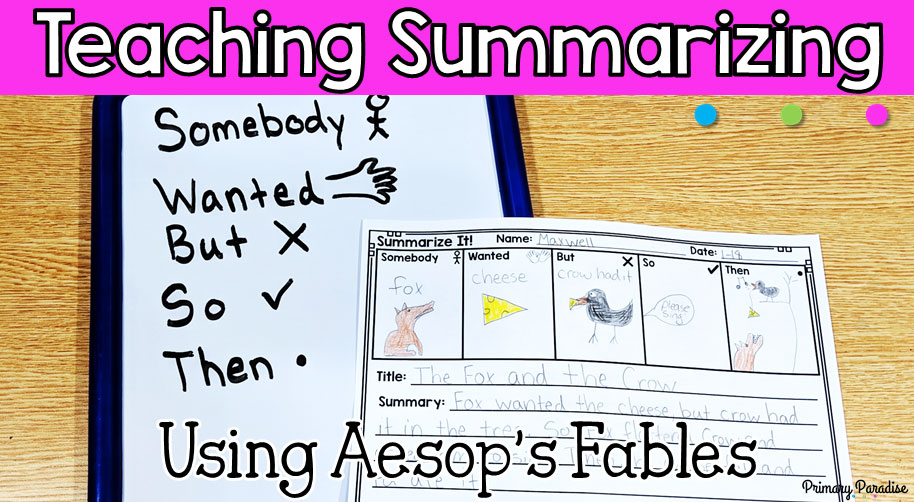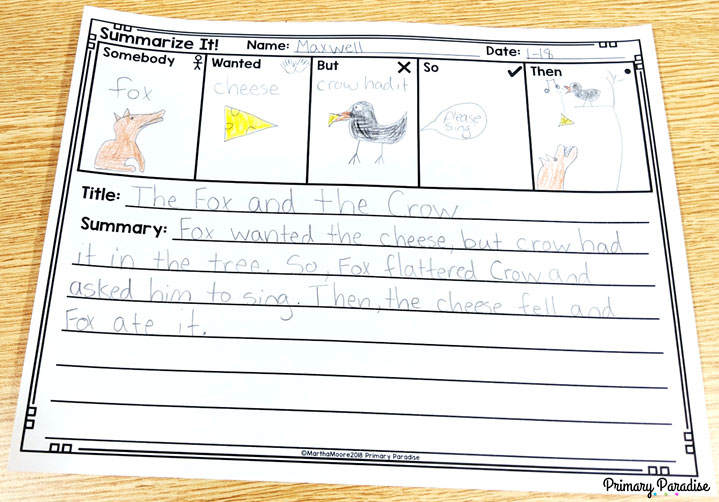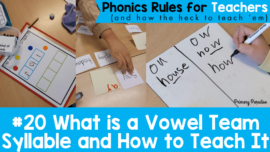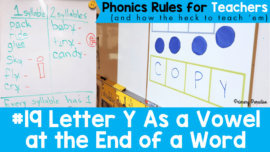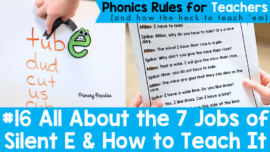Summarizing is such an important reading skill that is often really tricky for students. As a teacher, I find that my students struggle with writing summaries because they either want to tell me way too much or way too little. I’ve also found that the longer the story, the harder it is for them to summarize. I felt like I hit teaching gold when I began to teach summarizing with Aesop’s Fables. Here’s what we did.
The Basics: SWBST

You’ve probably heard of the Somebody Wanted But So Then model for summarizing before. I find it to be a really effective way to introduce summarizing because it gives students a nice, simple template to follow. I also like to add little picture prompts to go along with it so they remember what to write for each part (a person for somebody, a grabbing hand for wanted, an X for but, a check for so, and a period for then).
If you’ve never used SWBST, here’s a quick breakdown.
Somebody– the main character or characters (I tell my students to pick the somebody who has the first problem as a general rule of thumb)
Wanted– what the character was trying to get or do
But– the problem- typically what stops them from getting their want
So– the solution- how do the solve (or attempt to solve) the problem
Then– how does the story end
Why Use Fables to Teach Summarizing
I like to use fables to teach summarizing for three reasons.
- They’re short. This makes it much easier for students to recall the events in the story.
- There is always a very clear problem and solution.
- They’re often familiar. Typically at least a student or two in class (maybe more) is familiar with the most common fables.
How to Teach Summarizing Using Fables
First, take the time to introduce SWBST and discuss each part in depth. Depending on the age of the students, I like to also teach them hand motions for SWBST. Somebody (point to self), Wanted (pull hands towards self), But (make an X with arms), So (make a check mark in the air), Then (make a fist like a period).
Next, read a simple fable together. I find The Fox and the Crow to be a good starting story. (You can find many of Aesop’s Fables right here for free.) Model how to summarize using SWBST.
Then, read another fable together. Review SWBST, and then have student summarize in pairs. When they’re done, have students share out their summary. The nice thing about the length of fables is that you can often do this a few times in one class period because they’re so short.
Last, read one more fable together and then have students summarize individually. (Click here to grab the template pictured above.) Let them share their summaries with a buddy.
Once students have summarizing with fables down, you can have them begin to try it with longer and more complicated stories!
You can join my FREE Facebook Club for k-2 teachers here!
Find me on Instagram, Facebook, Twitter, and Pinterest!
